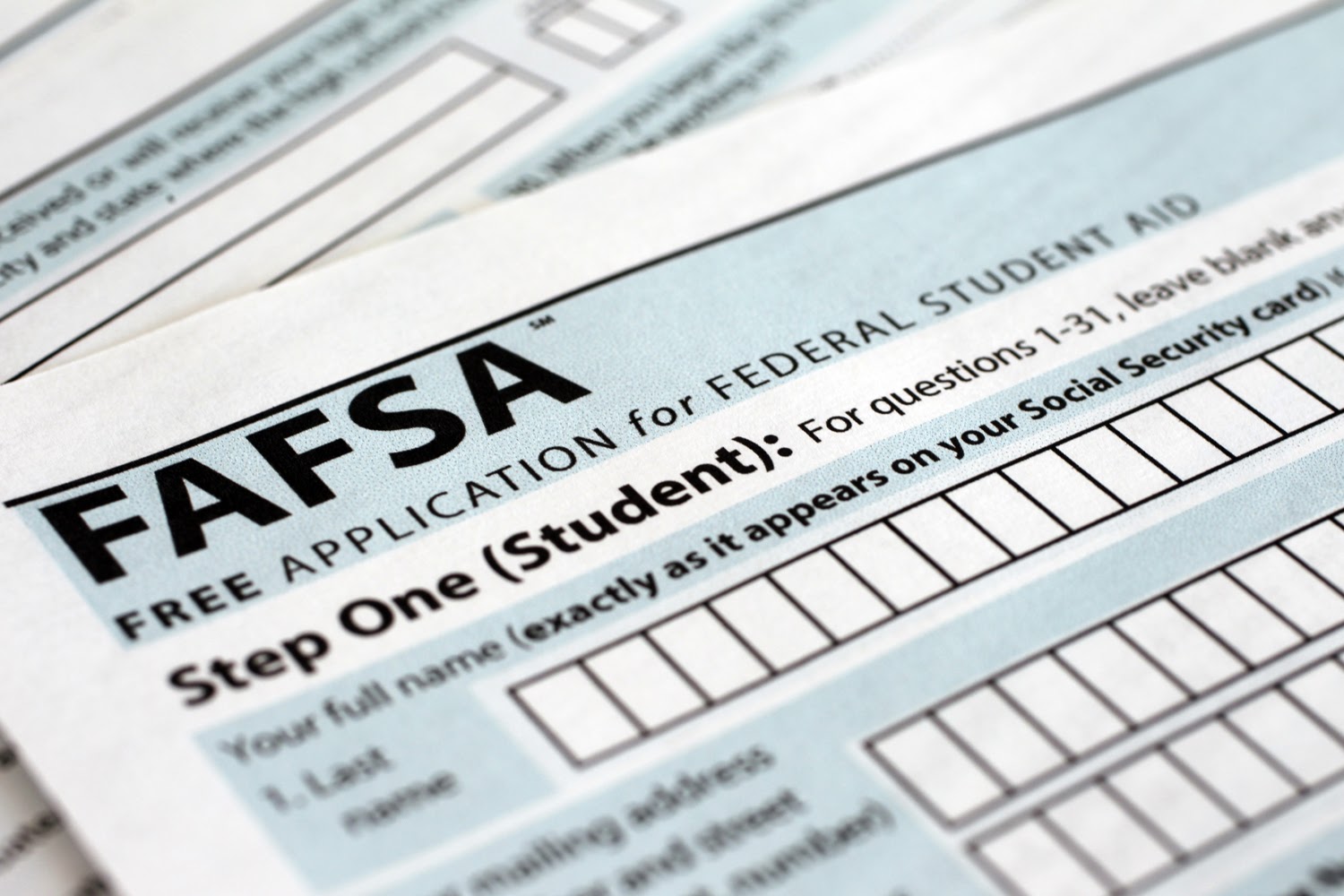Home>Education>The Shocking Truth About An EFC Of 0 On FAFSA


Education
The Shocking Truth About An EFC Of 0 On FAFSA
Published: January 10, 2024
Discover the truth behind achieving an EFC of 0 on FAFSA and its impact on your education. Learn how to navigate the financial aid process effectively.
(Many of the links in this article redirect to a specific reviewed product. Your purchase of these products through affiliate links helps to generate commission for Noodls.com, at no extra cost. Learn more)
Table of Contents
Introduction
The Free Application for Federal Student Aid (FAFSA) is a critical component of the college financial aid process, and for many families, the Expected Family Contribution (EFC) is a pivotal factor in determining a student's eligibility for financial assistance. The EFC represents the amount of money the student's family is expected to contribute toward their education for a single academic year. It is calculated based on various factors such as income, assets, family size, and the number of family members in college.
For some families, the prospect of an EFC of 0 on the FAFSA can be both surprising and perplexing. An EFC of 0 indicates that the student's family has no expected financial contribution toward their education, making them eligible for the maximum amount of need-based financial aid. This significant outcome can have a profound impact on a student's ability to afford college and pursue their academic aspirations.
In this article, we will delve into the implications of an EFC of 0 on the FAFSA, dispel common misconceptions surrounding this scenario, and explore strategies for maximizing financial aid opportunities. Understanding the nuances of an EFC of 0 is crucial for families navigating the complexities of the financial aid process, and our exploration aims to shed light on this often misunderstood aspect of college affordability.
Understanding EFC (Expected Family Contribution)
The Expected Family Contribution (EFC) is a pivotal metric in the realm of financial aid, wielding significant influence over a student's eligibility for assistance in pursuing higher education. This calculation is derived from the information provided in the Free Application for Federal Student Aid (FAFSA) and serves as a measure of the family's financial capacity to contribute to the student's educational expenses.
The EFC is determined through a complex formula that takes into account various financial factors, including the income and assets of the student and their family, as well as the number of family members and the number of those members attending college. Additionally, the cost of attendance at the chosen institution is factored into the equation. This comprehensive assessment aims to gauge the family's ability to support the student's educational endeavors.
It is crucial to comprehend that the EFC is not the amount of money the family is required to pay for college. Rather, it is a standardized measure used by colleges and universities to assess a student's financial need. Institutions utilize the EFC as a benchmark for determining the types and amounts of financial aid for which a student qualifies. The EFC essentially serves as a baseline for evaluating a student's eligibility for need-based aid, including federal grants, work-study programs, and subsidized loans.
Furthermore, the EFC is not a static figure but can vary based on changes in the family's financial circumstances. Factors such as fluctuations in income, family size, and the number of family members in college can all influence the EFC. This dynamic nature underscores the importance of accurately reporting financial information on the FAFSA and promptly updating any changes that may impact the family's financial standing.
Understanding the intricacies of the EFC empowers families to make informed decisions regarding college affordability and financial aid opportunities. By grasping the significance of this calculation and its implications, families can navigate the financial aid process with clarity and purpose, ultimately paving the way for students to pursue their academic aspirations without undue financial burden.
The Impact of an EFC of 0 on FAFSA
An Expected Family Contribution (EFC) of 0 on the Free Application for Federal Student Aid (FAFSA) can have a profound impact on a student's eligibility for financial assistance. This outcome signifies that the student's family is not expected to contribute financially towards their education, positioning the student to receive the maximum amount of need-based financial aid. The significance of an EFC of 0 extends beyond mere numbers; it can be a game-changer for students and families navigating the complexities of college affordability.
One of the most notable impacts of an EFC of 0 is the potential for eligibility for Pell Grants, which are federal grants awarded to undergraduate students with exceptional financial need. Students with an EFC of 0 often qualify for the maximum Pell Grant award, providing substantial financial support to help cover tuition, fees, and other educational expenses. Additionally, an EFC of 0 can open doors to other need-based aid programs, including Federal Supplemental Educational Opportunity Grants (FSEOG) and subsidized student loans, easing the financial burden of pursuing higher education.
Moreover, an EFC of 0 can significantly enhance a student's prospects for institutional aid. Many colleges and universities utilize the EFC as a benchmark for awarding their own need-based scholarships and grants. A student with an EFC of 0 may find themselves in a favorable position to receive generous institutional aid packages, further bolstering their ability to afford a college education.
Furthermore, an EFC of 0 can serve as a catalyst for work-study opportunities, enabling students to secure on-campus employment to help cover their educational expenses. This not only provides valuable financial support but also offers students the chance to gain practical work experience while pursuing their studies.
The impact of an EFC of 0 extends beyond the realm of financial aid. It can instill a sense of hope and possibility for students who may have previously felt that attending college was financially unattainable. By removing the financial barriers to higher education, an EFC of 0 empowers students to pursue their academic aspirations with confidence, knowing that they have the necessary financial support to embark on their collegiate journey.
In essence, an EFC of 0 on the FAFSA represents more than just a numerical outcome; it symbolizes the potential for transformative change in the lives of students and families. It opens doors to invaluable financial assistance, institutional support, and work-study opportunities, ultimately paving the way for students to pursue their educational dreams without the burden of overwhelming financial constraints.
Common Misconceptions About EFC of 0
Misconceptions surrounding an Expected Family Contribution (EFC) of 0 on the Free Application for Federal Student Aid (FAFSA) abound, often leading to confusion and misinformation among families navigating the college financial aid landscape. It is essential to address these misconceptions to ensure that students and their families have a clear understanding of the implications of an EFC of 0 and can make informed decisions regarding their educational pursuits.
One common misconception is that an EFC of 0 means the student's family is exempt from any financial responsibility for college expenses. While an EFC of 0 indicates that the family has no expected contribution according to the federal need analysis methodology, it does not absolve the family from potential out-of-pocket costs. Other factors, such as the cost of attendance at the chosen institution and available financial aid programs, can influence the actual amount the family may need to contribute.
Another prevalent misconception is that an EFC of 0 guarantees full coverage of college expenses through financial aid. While an EFC of 0 positions the student to receive the maximum amount of need-based aid, including Pell Grants and subsidized loans, it does not guarantee full coverage of all educational costs. Families should be aware that additional expenses, such as room and board, books, and personal expenses, may necessitate supplemental funding sources or out-of-pocket contributions.
Additionally, some may mistakenly believe that an EFC of 0 is solely based on income level. In reality, the EFC calculation considers various financial factors, including assets, family size, and the number of family members in college. It is a comprehensive assessment that aims to gauge the family's overall financial capacity to support the student's education, encompassing more than just income alone.
Furthermore, there is a misconception that an EFC of 0 guarantees the same financial aid package at all colleges. While an EFC of 0 signifies high financial need, the actual financial aid awarded can vary between institutions based on their individual aid policies and available resources. It is crucial for families to carefully compare financial aid offers from different colleges to make informed decisions regarding affordability.
Addressing these misconceptions is crucial in empowering families to navigate the complexities of college affordability with clarity and confidence. By dispelling misunderstandings surrounding an EFC of 0, students and their families can make well-informed decisions regarding financial aid opportunities and effectively plan for the financial aspects of pursuing higher education.
Strategies for Maximizing Financial Aid with an EFC of 0
Maximizing financial aid opportunities with an Expected Family Contribution (EFC) of 0 on the Free Application for Federal Student Aid (FAFSA) requires a strategic and proactive approach. While an EFC of 0 positions students for significant need-based aid, there are additional strategies that families can employ to further enhance their financial aid package and alleviate the financial burden of pursuing higher education.
-
Research Institutional Aid Programs: Many colleges and universities offer their own need-based scholarships, grants, and tuition assistance programs. Researching and identifying institutions with robust institutional aid offerings can supplement federal aid and further reduce the overall cost of attendance.
-
Appeal for Additional Aid: In certain cases, families may encounter unforeseen financial hardships or changes in circumstances that are not reflected in the FAFSA. In such instances, it is advisable to communicate directly with the financial aid office and appeal for additional aid based on specific needs or challenges that may impact the family's ability to contribute to educational expenses.
-
Explore External Scholarships and Grants: Encouraging students to actively seek out external scholarship opportunities can augment their financial aid package. There are numerous private organizations, community foundations, and corporate sponsors that offer scholarships based on various criteria, including academic achievement, extracurricular involvement, and specific areas of study.
-
Utilize Work-Study Opportunities: Work-study programs provide students with the opportunity to work part-time jobs on or off campus, allowing them to earn income to help cover educational expenses. Students with an EFC of 0 are often given priority for work-study positions, providing a valuable source of financial support while gaining practical work experience.
-
Strategic Financial Planning: Families with an EFC of 0 should engage in strategic financial planning to manage out-of-pocket expenses and potential indirect costs of attending college. This may involve creating a budget, exploring cost-saving measures such as purchasing used textbooks or utilizing public transportation, and seeking out resources for affordable housing options.
-
Maintain Academic Progress: Many financial aid programs, including federal grants and scholarships, require students to maintain satisfactory academic progress. Encouraging students to remain focused on their studies and meet academic benchmarks can ensure the continuity of their financial aid eligibility throughout their college journey.
By implementing these strategic approaches, families can optimize their financial aid package and minimize the financial barriers associated with pursuing higher education. Understanding the available avenues for maximizing aid with an EFC of 0 empowers students and their families to make informed decisions and embark on their academic pursuits with greater financial security.
Conclusion
In conclusion, the prospect of an Expected Family Contribution (EFC) of 0 on the Free Application for Federal Student Aid (FAFSA) represents a pivotal opportunity for students and families to access vital financial aid resources and pursue higher education without the burden of overwhelming financial constraints. An EFC of 0 signifies high financial need and can open doors to a myriad of need-based aid programs, institutional support, and work-study opportunities, ultimately transforming the educational landscape for those who may have previously perceived college as financially unattainable.
It is essential for families to recognize that an EFC of 0, while indicative of significant financial need, does not guarantee full coverage of all educational expenses. Families should proactively explore additional avenues for maximizing financial aid, including researching institutional aid programs, appealing for additional aid based on specific circumstances, and actively seeking external scholarships and grants. Engaging in strategic financial planning and maintaining academic progress are also crucial components of optimizing the overall financial aid package.
By dispelling common misconceptions surrounding an EFC of 0 and understanding the multifaceted implications of this outcome, families can navigate the complexities of college affordability with clarity and purpose. The impact of an EFC of 0 extends far beyond numerical calculations; it embodies the potential for transformative change in the lives of students, empowering them to pursue their academic aspirations with confidence and determination.
Ultimately, the journey toward higher education is enriched by the availability of need-based financial aid, and an EFC of 0 serves as a beacon of hope for students and families, signaling the attainment of crucial financial support to embark on the path to academic achievement. Embracing the opportunities presented by an EFC of 0 and employing strategic approaches to maximize financial aid ensures that students can pursue their educational dreams with the necessary financial resources, paving the way for a future defined by academic success and personal fulfillment.














